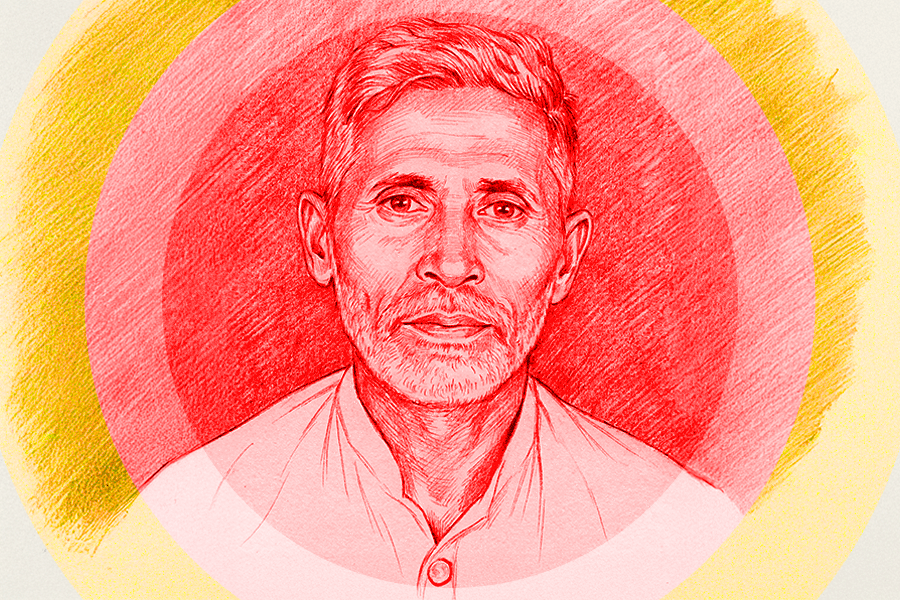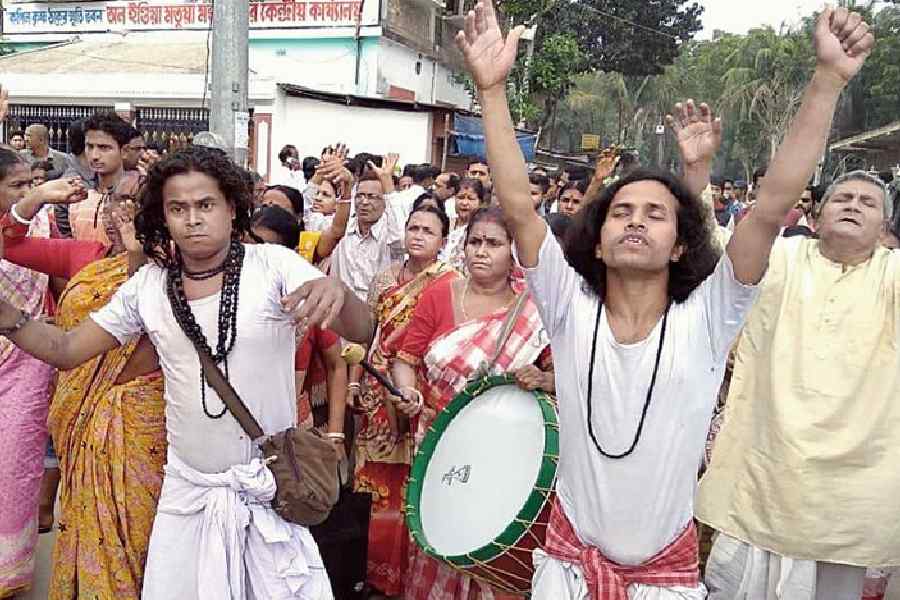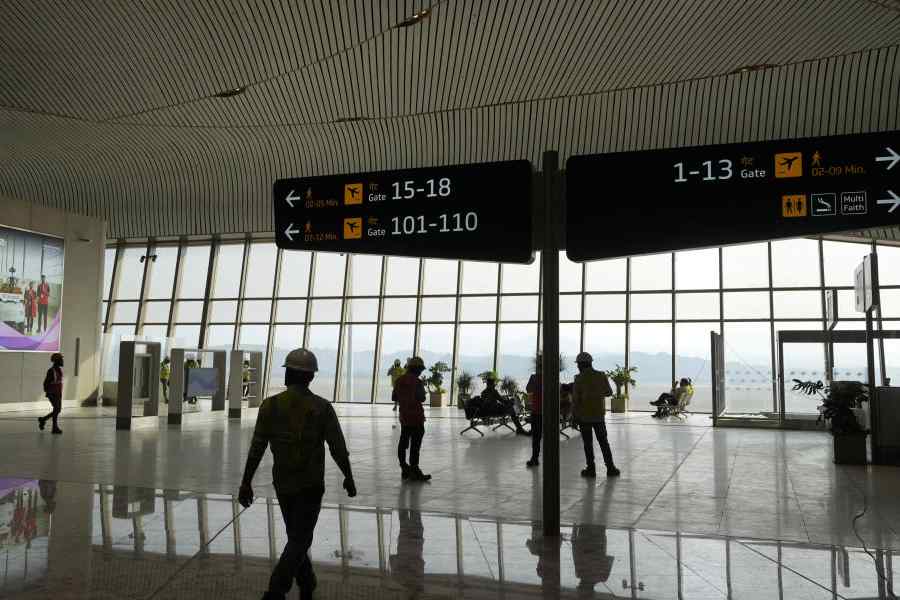Maids can’t be hired and fired at will. You are also deprived of the pleasure of maid snatching. If you are upmarket enough. In Mani Karn, the swank new housing complex off the EM Bypass, built in the shadow of Calcutta’s new hotspot, Mani Square , the resignation of maids is official business.
“Maid snatching is not allowed in our complex. No house can steal my maid with an extra Rs 500. Unless I accept her resignation, she can’t take work anywhere else,” says nutritionist Rachana Rastogi who lives in Mani Karn, where a Honda Accord doesn’t get a second glance (not really).
Here, if a maid seeks a new job, the current employer has to put it in black and white that she has no objection to the help going elsewhere and send the letter to the committee.
What happens if, despite the rule, your neighbour mops up your maid? The residents believe that “thou shalt not steal your neighbour’s maid” will prevail, but can the temptation of making the Honda Accord woman next door suffer be really chained?
Unique challenges face the denizens of the trendy upscale housing societies that are changing Calcutta ’s skyline, especially along the Bypass. For one thing, class relations, vis-à-vis domestic help in particular, are being reorganised.
“If the maid does not come to work, we just report at the desk and a replacement is sent. The committee has a pool of resumes and shortlists candidates according to the owner’s requirement,” says Madhumita Bhattacharya, a teacher and resident of West Wind on Raja Subodh Chandra Mullick Road .
In the Hiland Park residential complex, the presence of NRIs is the catalyst. Their absence, rather.
“There are a number of NRIs who have bought flats and penthouses here,” says Indrani Varma, a resident. That is not a problem, but their higher purchasing power is. “They come down, maybe, twice a year, but hire maids for the whole year. They pay more, too,” she adds. Which makes things a little difficult for the PRIs (permanent residents of India).
“Maids, and drivers, throw tantrums. They ask for more,” laughs Indrani, a mother of two. But she quickly adds that it doesn’t mean there’s any paucity of maids, drivers and others seeking menial work. Hiland Park may be an island of highlife, but the same old economy prevails in the neighbourhood shanties and localities like Sonarpur, Kalikapur and Garia.
A place like Hiland Park is free of middle-classness in several ways. Two young women sit smoking on its lawns. They insist they don’t feel eyes boring into them, as would happen almost anywhere in the city, looking — make that staring and staring hard — being a favourite Calcutta pastime. The women will remain anonymous, for the mother of one would not be happy to know her daughter smokes.
But it’s anonymity, in another sense, that protects the residents from being looked at. It’s the “cosmopolitan” anonymity one associates with life in Mumbai. “Because people don’t know each other,” says Maureen Nandini Mitra, an environmental writer, who lives in the same building as footballer Bhaichung Bhutia. Neighbours, even if they know each other, don’t show their envy — not in an obvious way.
“Because everyone is more or less well off, no one is really bothered to keep track of the neighbour’s latest acquisition of a status symbol,” says a resident of Utsa Luxury in New Town, Rajarhat.
Though it does persist in subtle ways. Your neighbour getting a Toyota Corolla may pass without comment, but the owner of the car may want deferential behaviour, claiming to enter the complex without the mandatory security check.
People may not know each other — but that does not stop gossip altogether. One of the snazziest complexes was recently abuzz with the story of a young man trying to kill himself with a knife that cost him Rs 40,000. But he survived. And went on to convert his flat into a bar, with floor lighting, strobes and state-of-the-art music systems.
“But nothing really raises the eyebrow here,” says Maureen of Hiland Park. Except one or two things.
In the swimming pool, hardly anyone wears the bikini. “I have the boldest swimsuit and it shows a lot of back, but it’s still a one-piece,” Maureen claims. Let’s not call it middle-classness, but the standard of Indian “decency”.
Pet behaviour may be a problem, too. Maureen has a cat named Madhusudan, whiskers being the only thing it shares with the poet. “We have two kinds of elevators, one for residents, the other the service lift. Very elitist. So one day I was in the lift with Madhusudan. But an old gentleman, who was inside too, complained at the reception about me, asking why pets were allowed in this lift,” says Maureen.
The service lift is meant for maids — and pets. Are you listening Maneka Gandhi?
“Luckily there are no bans on pets in my present society as was the case in our previous complex,” adds Madhuchhanda Dasgupta, an IT professional and a resident of Ruchira Residency, off EM Bypass .
Maybe elitism and new-age living are not so good for animals, and for romance. Young love, which has been known to blossom in such abundance in the smaller, not-so-upmarket housing societies that in-breeding became a medical problem, is not really a noticeable feature of the tony complexes.
“Where are the smart boys and girls in Calcutta ? They all head to Bangalore the minute they finish school. So not much scope for romance inside complexes,” says Ilina Majumdar, homemaker and a resident of Ruchira Residency.
“People are so health-conscious that they are always walking, or jogging. There are too many people for couples to be left alone,” says Mrinmoyee Sinha, another Hiland Park resident, who works in a knowledge consultancy firm.
So the gym becomes a love destination. Many young residents spend so much time at the gym that exchanging hearts, or at least looks, becomes possible. Sometimes through the mirrors.
“I saw something happening between a gym-obsessed beefy boy and a young model who would wear leotards with a short frilly skirt,” says a regular Hiland Park gym-goer, or gymmer, which sounds better.
“The boys can be unbearable. They can’t stop preening before the mirror and checking out their biceps every two minutes,” says the gymmer. There certainly is self-love, if not anything else.
The pujas and other festivals often bring young people together and spark off romances. Very old-fashioned. But there are too many places outside in the city to go now. “In my one-and-a half years in Hiland Park , I have only seen one couple kissing,” says Mrinmoyee.
“Couples holding hands may be spotted in our park or in the various nooks and corners of our complex at times. But they don’t make interesting gossip any more,” says Kakoli Haldar, a resident of Avishikta, off the Bypass.
All strappy tops and shorts, but still very traditional. Tradition can impose, too. “One fine day, I was told that a Shiv mandir will be built next to our building,” says Maureen. “There’s nothing wrong with building a mandir, but I felt that people from other communities might feel left out if only a temple was built. I tried to tell that to an old gentleman who didn’t believe in the existence of any other religion.”
The temple was built, though Maureen wrote an angry letter to the association.
However new age, there are some persistent old-world problems. “The water supply from Hidco is just not enough,” says Deepak Dutta, the secretary of Utsa Luxury.
There is an even more serious old-world problem — of politicking.
What if societies now come with zero pollution (well, almost), their own sewage system, mineral water plant, 24-hour electrician, in-house plumber, generator, yoga room, crèche, banquet hall, manicured lawns, sometimes a jacuzzi and sauna, human nature remains the same.
“There are people who buy popularity by even taking in neighbours’ children and seeing to their homework. But there are also people who will criticise everything. It’s groupism, what we call daladoli. Unfortunately, the Bengalis are best at it,” says a resident of a Rajarhat New Town society.
He is a Bengali too.
If there’s politicking, it must produce dirty linen, though at least one other way of creating such-named textiles has been known since the beginning of history.
“We don’t allow residents in Mani Karn to hang their clothes outside their balcony. Many new apartments are coming up with in-house laundry facility to avoid drying clothes in the balconies,” says Abhijit Basu, the regional head of Jones Lang Lasalle Meghraj , which manages the property at Mani Karn, Hiland Park, South City residential area, Greenwood Park and many other complexes.
But stand on the pavement outside one of these complexes and you will see many saris hanging from the front balconies. Suddenly, the high in the highrises doesn’t seem so high any more. And balconies, if you ask me, have always looked inviting draped in sexy saris.
New ‘para’ in town
For IT professional Saibal Guha and his dentist wife Shalmoli, shifting to sparsely populated New Town from a busy area in Kasba was not that difficult. Though there is just vacant land stretching for many miles around them, and a lonely police post to bank on, a “para” of sorts has come up in the last couple of years in the area thanks to around 10 residential complexes and the DLF IT park.
“We enjoy the peace around us. Till some time ago living here would have been impossible. But now thanks to the residential and commercial complexes, the locality has come alive. The transportation has improved. We have a supermarket catering to all our needs. Of course, the choice is not as varied as in other parts of the city but it satisfies our daily requirements,” says Shalmoli, a resident of Greenwood Park in New Town.
Most New Town complexes comprise towers meant for three categories: the higher-income group, the middle-income group and the lower-income group. While in some, all the groups get together for social occasions, in others the celebrations and even the play areas are separate.
Srijita Dutta, a student who lives in Rajarhat Bengal DCL, doesn’t find commuting difficult after a new bus terminus has come up. “There were just a few White Liners. Now we have buses going to any corner of Calcutta. An auto service has also started,” she says. “During Durga puja we go complex-hopping to check out our neighbour’s idols. This is our way of keeping the ‘para’ culture alive,” she adds.
A police station will be inaugurated on August 15, a Reliance Fresh outlet and a second City Centre are in the offing. “Even the vegetable vendors are gradually setting up permanent stalls. New Town will get as crowded as any other place in a year’s time,” adds Dutta.
“Jewellers have also started setting up shop here,” laughs Shalmoli.
Highrise highlights
![]() Spa, sauna and jacuzzi (Hiland Park, Mani Karn, South City )
Spa, sauna and jacuzzi (Hiland Park, Mani Karn, South City )
![]() Panic buttons in every room (Mani Karn). They enable residents to call for help in case of an emergency
Panic buttons in every room (Mani Karn). They enable residents to call for help in case of an emergency
![]() Library (Mani Karn)
Library (Mani Karn)
![]() Trained lifeguard in swimming pools (Mani Karn)
Trained lifeguard in swimming pools (Mani Karn)
![]() In-house restaurant (Mani Karn)
In-house restaurant (Mani Karn)
![]() Life skill training. Fire drills are conducted for all residents. Maids are encouraged to join (Mani Karn: Held regularly, West Wind: occasionally)
Life skill training. Fire drills are conducted for all residents. Maids are encouraged to join (Mani Karn: Held regularly, West Wind: occasionally)
![]() Tennis court (West Wind, Hiland Park )
Tennis court (West Wind, Hiland Park )
![]() Nursing home, bank, ambulance (Peerless Nagar)
Nursing home, bank, ambulance (Peerless Nagar)
![]() Supermarket, mall at doorstep (South City, Mani Karn, Greenwood Park, Hiland Park )
Supermarket, mall at doorstep (South City, Mani Karn, Greenwood Park, Hiland Park )
![]() In-house sewage treatment plant (Hiland Park, Mani Karn, South City, Greenwood Nook)
In-house sewage treatment plant (Hiland Park, Mani Karn, South City, Greenwood Nook)
![]() In-house laundry facility (To come up in new complexes near ITC Sonar, Calcutta)
In-house laundry facility (To come up in new complexes near ITC Sonar, Calcutta)
![]() Rain harvesting system (South City )
Rain harvesting system (South City )
![]() Professional property managers, or “facility coordinators” (Mani Karn, Hiland Park , Greenwood Nook). Strict taskmasters hired to keep a hawk eye on the beautifully landscaped “common area” of a complex
Professional property managers, or “facility coordinators” (Mani Karn, Hiland Park , Greenwood Nook). Strict taskmasters hired to keep a hawk eye on the beautifully landscaped “common area” of a complex
![]() Celebs as neighbours:
Celebs as neighbours:
![]() Footballer Bhaichung Bhutia (Hiland Park)
Footballer Bhaichung Bhutia (Hiland Park)
![]() Actress Rachana Banerjee (Hiland Park)
Actress Rachana Banerjee (Hiland Park)
![]() Singer Shilajeet Majumdar (Ruchira)
Singer Shilajeet Majumdar (Ruchira)
![]() Tabla maestro Bickram Ghosh (has a flat in Genex Valley )
Tabla maestro Bickram Ghosh (has a flat in Genex Valley )
![]() Actress Moumita Gupta (Avishikta)
Actress Moumita Gupta (Avishikta)
![]() Actor Sankar Chakraborty (Avikshikta)
Actor Sankar Chakraborty (Avikshikta)
![]() Actor Kushal Chakraborty (Avishikta)
Actor Kushal Chakraborty (Avishikta)
![]() Actress Rituparna Sengupta (has a flat in South City )
Actress Rituparna Sengupta (has a flat in South City )











